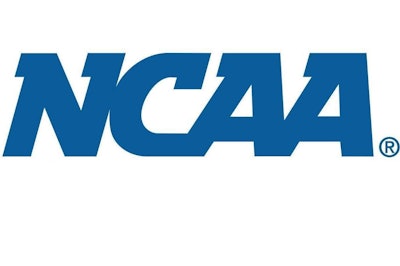The NCAA Men's and Women's Ice Hockey Rules Committee proposed a significant overhaul to the video replay process at its meeting this week in Indianapolis. In the new process, coaches may challenge a reviewable play, and if the play is not reversed, a timeout will be charged for the unsuccessful challenge. Any subsequent unsuccessful challenges would result in a minor penalty for delay of game.
If approved, the rule would go into effect for the 2022-23 academic year. All rule proposals must be approved by the NCAA Playing Rules Oversight Panel, which will discuss ice hockey recommendations July 20.
The NCAA Men's and Women's Ice Hockey Rules Committee proposed a significant overhaul to the video replay process at its meeting this week in Indianapolis. In the new process, coaches may challenge a reviewable play, and if the play is not reversed, a timeout will be charged for the unsuccessful challenge. Any subsequent unsuccessful challenges would result in a minor penalty for delay of game.
If approved, the rule would go into effect for the 2022-23 academic year. All rule proposals must be approved by the NCAA Playing Rules Oversight Panel, which will discuss ice hockey recommendations July 20.
Committee members believe the current process has created significant issues with game flow and puts unnecessary pressure on officials to review plays without a formal challenge being made.
"The committee believes this change will reduce the number of reviews while still providing tools to ensure the most significant calls are made accurately," said Joe Gervais, committee chair and associate athletics director at Vermont. "All areas of the hockey community indicated support for reducing the number of replay reviews."
Several reviewable plays will require a coaches' challenge for review, including goaltender contact, offsides infractions and high sticking the puck that leads to a goal. Referees continue to have discretion to review most aspects of the scoring of a goal and players where a major penalty is being considered.
Overtime/shootout
The committee reviewed data and comments regarding the overtime format, which was altered two seasons ago to include a mandatory five-minute period with three skaters on each side. The group decided to continue with this policy for all regular-season contests. The committee voted to allow a shootout in situations where the game remains tied after the overtime period. The host school's conference policy on shootouts will be followed.
The committee met with the various ice hockey championship committees to discuss the overtime format before finalizing its approach.
Major penalty option
A significant amount of discussion centered around the penalty structure for hitting from behind and contact to the head. Since the 2010-11 season, the penalty for contact to the head and hitting from behind into the sideboards or goal cage has been a minimum of a major penalty coupled with either a game misconduct or disqualification, depending on the severity of the foul.
"We strongly believe player behavior has improved and remain committed to enhancing player safety with these critical rules," Gervais said. "In recent years, the rigid nature of the penalty has resulted in ejecting players that do not warrant such a severe penalty."
To address this, the committee approved a proposal that will provide officials an option of a major (five-minute) penalty without an ejection. An educational video will be developed to illustrate the differences between a major penalty by itself and a major penalty with an ejection.
Other adjustments
The committee approved several other adjustments, including:
- Offsides: A player shall be considered onside if the skate is over the blue line when the puck enters the attacking zone, which is the rule used in the National Hockey League. Previously, the skate was required to be in contact with the blue line.
- Supplementary discipline: The committee added language to clarify that this provision is intended for egregious situations.
- Video review – offsides and possession and control: When reviewing a potential offsides play, the provision that nullified a review opportunity if the defending team gained possession and control of the puck was removed.
- Pregame/intermission protocols: The committee added language to the pregame protocol to clarify that student-athletes should not be on the ice before the start of the pregame process. Additionally, after intermissions, players should proceed directly to the bench, except for the players who will start the period.
- Intermissions: The length of intermissions shall be 12 or 15 minutes. The 18-minute option for intermissions was removed.
- High sticking in defensive zone: To be consistent with a hand pass infraction in the defensive zone, when the defensive team high sticks the puck in the defensive zone, the team will not be able to change its players.
- Covering puck in crease: The committee added covering the puck in the crease by a skater as a reviewable play through a coaches' challenge.





































